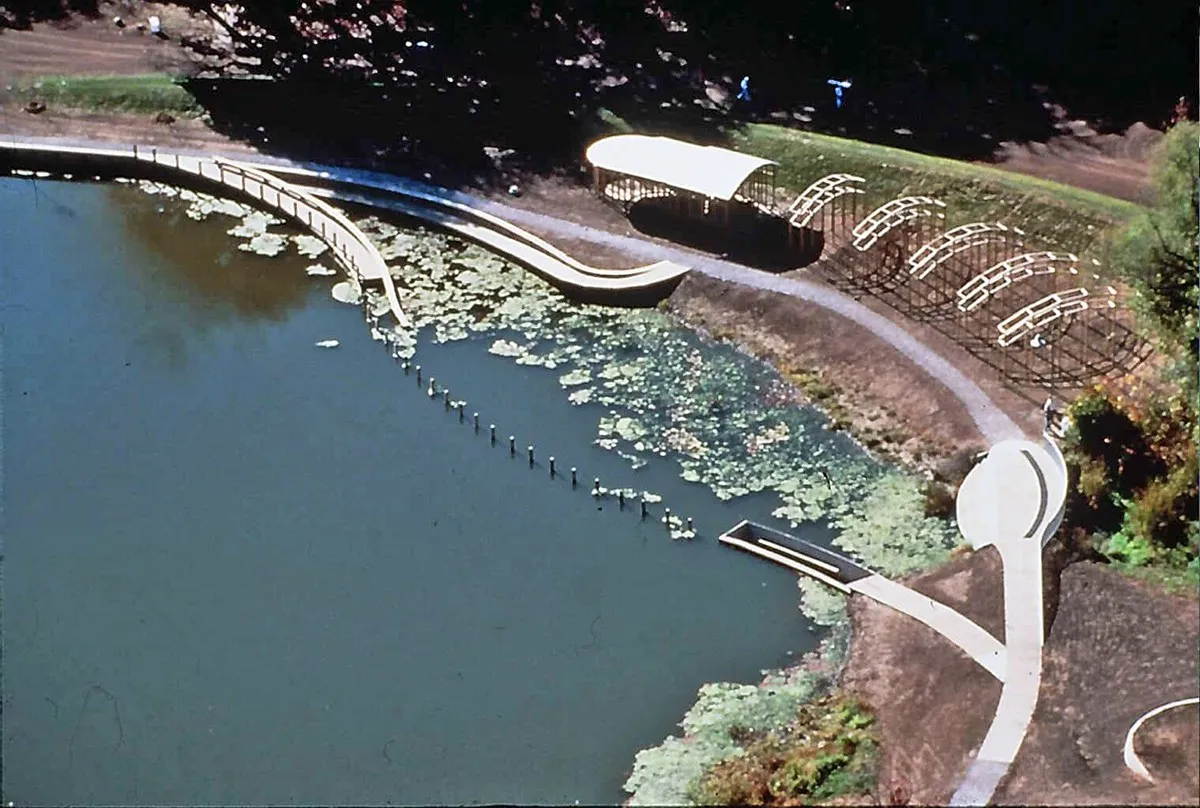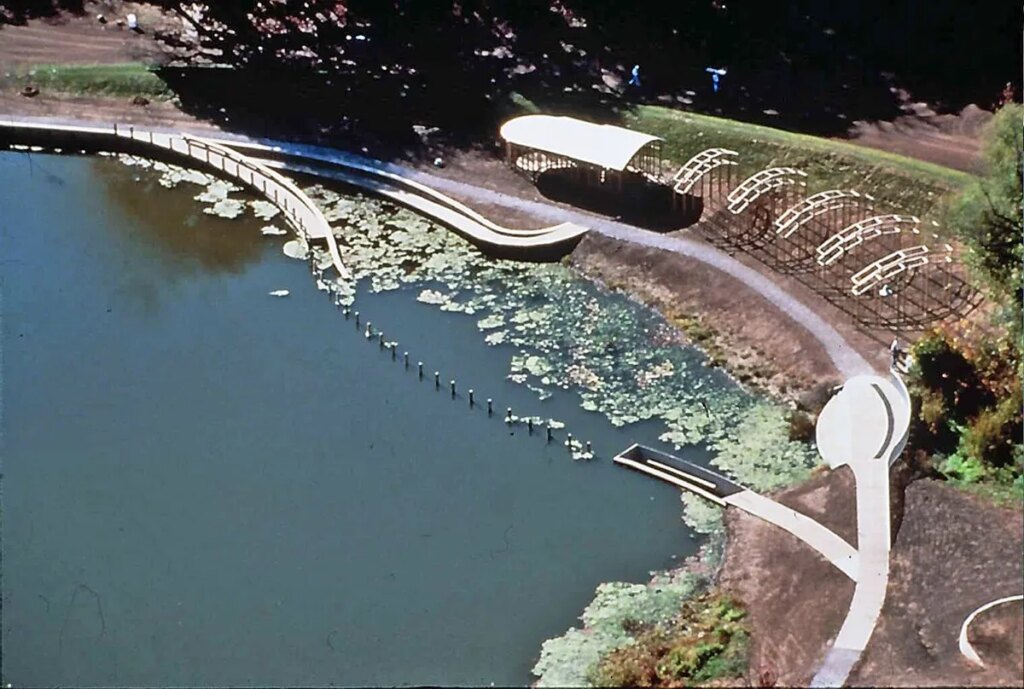
To receive Morning Links in your inbox every weekday, sign up for our Breakfast with ARTnews newsletter.
THE HEADLINES
SUIT UP. Mary Miss, a key figure in the Land Art movement, has filed suit against the Des Moines Art Center in a bid to stop the institution from demolishing her outdoor installation. Plans to destroy the work, which was commissioned by the center in the 1990s, were revealed in January. The center has argued that after decades exposed to the elements, the installation has eroded past the point of salvation. Curators, artists, and even former DMAC staff, however, have called foul: In a series of letters sent to the director (and published online for any to read), they question the museum’s efforts to raise enough funding to salvage the installation, and lament its removal as a loss to the canon of environmental art. For her part, Miss said of the DMAC: “They have only themselves to blame for this avoidable scandal.”
SO LONG. Marlborough Gallery, a nearly 80-year-old enterprise and renowned dealer of post-war art, will wind down its operation worldwide and, as of June, cease all programming. The gallery currently operates spaces in New York City, London, Madrid, and Barcelona, and has reportedly some $250 million worth of art to sell before curtains fall. According to those in the know, a portion of the proceeds from the liquidation will be earmarked for donation to not-for-profit cultural institutions that support contemporary artists. The news follows several dramatic years for the gallery, including a family feud and a lawsuit leveled by Max Levai, president of the gallery, against two members of its board.
THE DIGEST
The auction of more than 1,000 pieces of African art was abruptly canceled Thursday morning, after authorities received word that the owner of the collection filed for bankruptcy. It was a controversial sale, to start. In 2020, investigators had discovered the massive trove of art secretly stored inside of a maintenance shed “at the expense of taxpayers,” Harris County media reports. [Click 2 Houston]
The last standing contemporary arts space in the Gaza Strip was destroyed during Israel’s second military raid on the Al-Shifa Hospital. Shababeek for Contemporary Art included a nonprofit arts education center and gallery, both located only several feet from the besieged medical complex. [Hyperallergic]
Oregon’s Portland Art Museum has revealed plans for a major renovation and expansion that will add 95,000 square feet of new or revamped exhibition and public space to the institution. The $111 million project is set to be completed in 2025. [Artforum]
Writing for ARTnews, Eliza Levinson dives into the existential crisis consuming Germany’s cultural sector. The ongoing war in Gaza and related debate over the definition of antisemitism, she says, has “inflamed some of Germany’s most sensitive, and urgent, political debates, sparking cancelations, defundings, boycotts, and resignations.” [ARTnews]
Eli Noyes, an Oscar-nominated filmmaker whose stop-motion animation using clay and sand indelibly shaped the aesthetic of American cinema, has died. He was 81. [The New York Times]
A fantastical abode known as Ron’s Place, in the British town of Birkenhead, created by the late self-taught artist Ron Gittins, has become the first Outsider artwork to gain listed status in England. [The Art Newspaper]
THE KICKER
HEAVENLY INSPIRATION. Find higher ground and cover your eyes: a twice-in-a-lifetime solar eclipse is upon us. For approximately four minutes on Monday, the sun will slip behind the moon, blanketing the path of totality with sudden dusk. Such celestial phenomena have inspired artists for centuries, and this eclipse is no different. At the Dallas Art Fair, Ashley Zelinskie debuted sculptures of a bitumen-black moon concealing the sun save for its burning cornea and curling filament, based on new images from the James Webb Space Telescope; in New York City, Angela Lane’s postcard-sized oil paintings of eclipses will be on view at Anat Ebgi later this year; and Rachel MacFarlane, who has a solo, solar-themed show at Hollis Taggart, has shared plans to recreate the total eclipse (as seen from NYC) in her studio. In a worthwhile read, Smithsonian Magazine analyzes representations of eclipses, from Chinese mythology, to Byzantine iconography and modern abstractions. “Why are we here?” and “What’s out there,” Zelinskie asked, speaking with the magazine. “We’ve been asking these questions since we were able to think, so to be answering these questions as an artist is basic human curiosity.”


